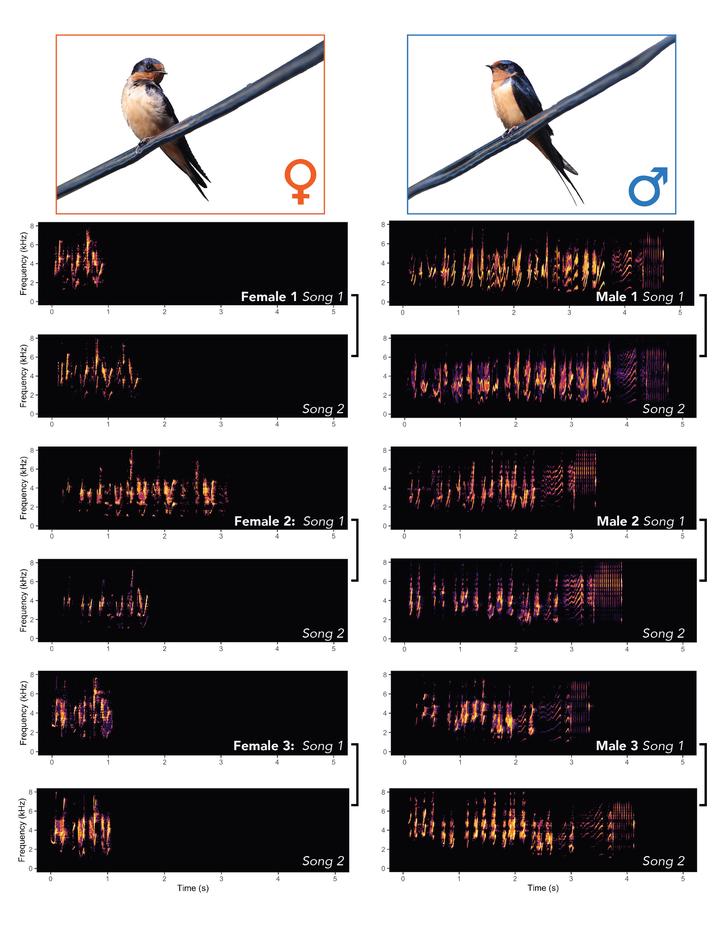Analysis of female song provides insight into the evolution of sex differences in a widely studied songbird

Abstract
Understanding the patterns and processes related to sexual dimorphism and sex differences in diverse animal taxa is a foundational research topic in ecology and evolution. Within the realm of animal communication, studies have traditionally focused on male signals, assuming that female choice and male–male competition have promoted sex differences via elaboration of male traits, but selection on females also has the potential to drive divergence. Here, we describe female song in barn swallows, Hirundo rustica erythrogaster, for the first time, report rates of female song production and couple song data with plumage data to explore the relative degree to which sex differences in phenotypic traits are consistent with contemporary selection on males versus females. During previous intensive study of male song over 2 years, we opportunistically recorded songs for 15 females, with matched phenotypic and fitness data. We randomly selected 15 high-quality samples from our larger male data set to test whether sex differences in song and plumage are more strongly associated with fledgling success for females or genetic paternity for males. Analyses included 35 potential sexual signals including 22 song parameters and 13 plumage traits. Outcomes indicate that female songs were used in multiple contexts, restricted primarily to the beginning of the breeding season; song traits showed greater sexual differentiation than visual plumage traits; and trait correlations with reproductive success in females, rather than males, predicted sex-based differences in song and plumage. These results are consistent with phylogenetic studies showing that sex-based phenotypic differences are driven by changes in females, highlighting the potential role of female trait evolution in explaining patterns of sexual differentiation. To achieve a better understanding of sex differences and dimorphism, we require comprehensive studies that measure the same traits in males and females and their fitness consequences.
